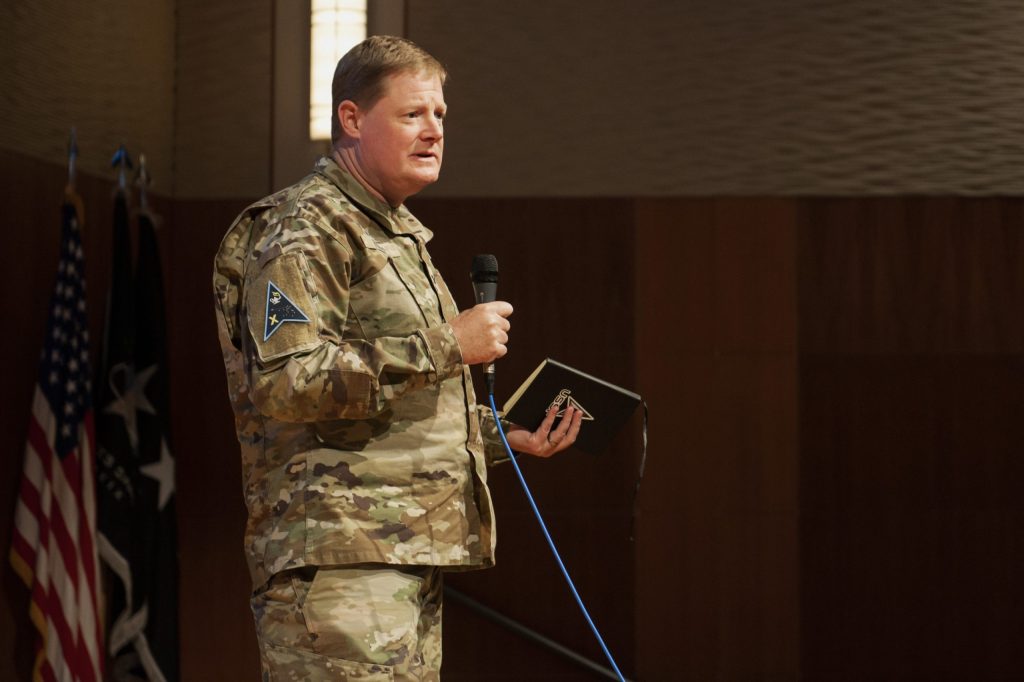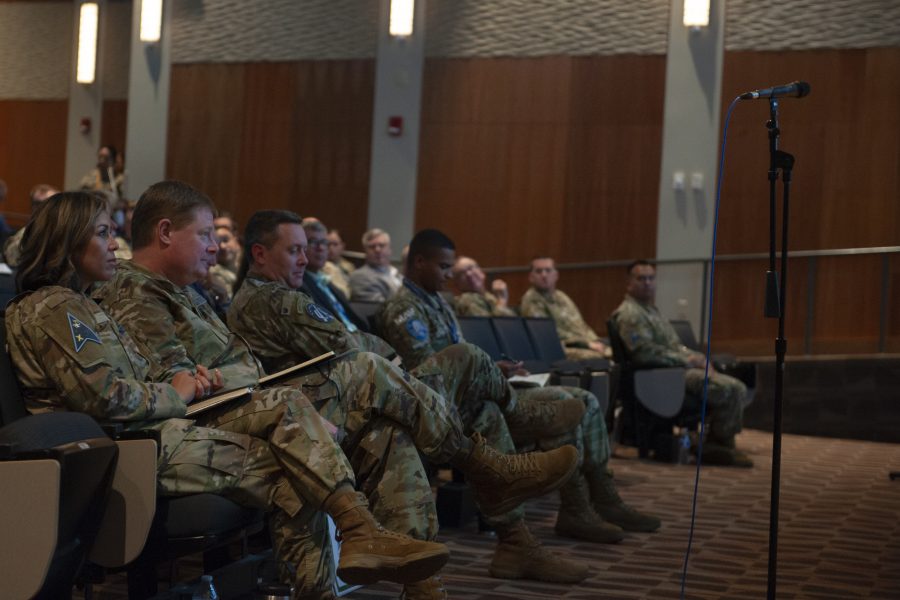Every military service is constantly developing and tweaking tactics. But for the Space Force, the process by which the young service develops and approves them will shape the USSF for years to come.
That development was highlighted last month by the first ever USSF Tactics Development Conference, the culmination of a system that is “purely unique” to the Space Force, a senior service official told Air & Space Forces Magazine.
Col. Jack D. Fulmer leads Space Delta 10, which organized the conference and has worked for two years to implement a new method of tactics development.
“Initially, for the first year of our existence, we relied real heavily on headquarters and then legacy Air Force processes for weapons and tactics development,” Fulmer said. “But as a new service, we wanted to make sure that we developed and implemented a process that was purely unique to the Space Force.”
Several factors drove the need for a new approach, Fulmer added:
- The Space Force’s limited, “lean” size
- Specific challenges inherent to systems in orbit
- New and growing threats from adversaries
Chief of Space Operations Gen. B. Chance Saltzman has specifically cited the need to develop new tactics—examples include: “How do I move satellite communications beams? How do I detect a rendezvous proximity opposite to what an adversary is trying to do? How do I do that in real time?” he said in January.
Answers to those questions will come from Guardians who work with those satellites every day, Fulmer said, and the service doesn’t want to have to wait on its most senior leaders to approve new ideas.
“[We’ve worked] to remove sort of the hierarchy in terms of how we go about developing and getting approved our tactics, and then empower the Delta commanders and squadron commanders, as well as the individual Guardians who actually think about and come up with different tactics for our different satellite systems and weapon systems,” Fulmer said.
Specifically, the service has reduced the authority necessary to approve new tactics from O-9 or O-10 levels—three and four star generals—to an O-6, who is the “mission commander who’s tied closest to that particular weapons system and what his overall or her overall mission system is,” Fulmer said.

New ideas for tactics can also be referred to a Mission Focused Working Group, an idea Fulmer said the Space Force carried over from the Air Force’s Weapons and Tactics conferences.
A year ago, Fulmer and other leaders selected three such groups to move forward and develop proposals and briefs for the Tactics Development Conference at Wright-Patterson Air Force Base, Ohio. In July, participants presented their ideas to senior leadership, led by Lt. Gen. DeAnna M. Burt, deputy chief of space operations for operations, cyber, and nuclear.
One such working group focused on modeling and simulation—“what modeling and simulation efforts are going across our service, and then how do we develop sort of a program or a policy that then helps funnel these different activities into a singular focus so the entire service is operating off of one modeling and simulation capability,” Fulmer said, declining to discuss the other two due to classification issues.
All three areas were selected because Fulmer and other leaders believed the ideas were mature enough to develop in a year and present to the top brass. And the effort is accelerating; seven working groups were approved to present at next year’s conference, Fulmer said.
The need for new tactics is being driven by growing threats. As China and Russia have developed and tested capabilities to threaten systems, the Space Force needs to prepare to operate in a contested domain, Saltzman has said. Part of that shift will come with acquiring smaller satellites in greater quantities to increase resilience.
But the Space Force’s larger, exquisite satellites have value too, and figuring out tactics to help them survive threats is important, Fulmer said. Members of the service’s component commands in the Indo-Pacific and Middle East highlighted those threats at the conference.
“That I think really helped open the eyes of attendees, in terms of, ‘Hey, this is important work.’ If you can get a tactic that can prolong the life of a system or increase capability, because obviously, our space-based assets, we don’t have the capability to go out there and service them,” Fulmer said. “So if we do things, we have to do it through software or through tactics in order to draw out additional capabilities. And so from that standpoint, you get that message home that is, the work that you’re doing in terms of extending the life and getting more out of the capability that we already had.”
The next Tactics Development Conference is scheduled for November 2024, but Fulmer and his team have a full plate until then. One of their top priorities is developing what he called a “repository” for proposed and approved tactics to allow leaders from across the service to look at what other operators are doing.
“We even want those which are denied by the Delta commander in that particular repository, because at some point in time, maybe technological changes or a greater understanding of the domain, maybe at that point, that particular tactic which was not approved, all of a sudden, hey, this may be a reality now,” Fulmer said.
